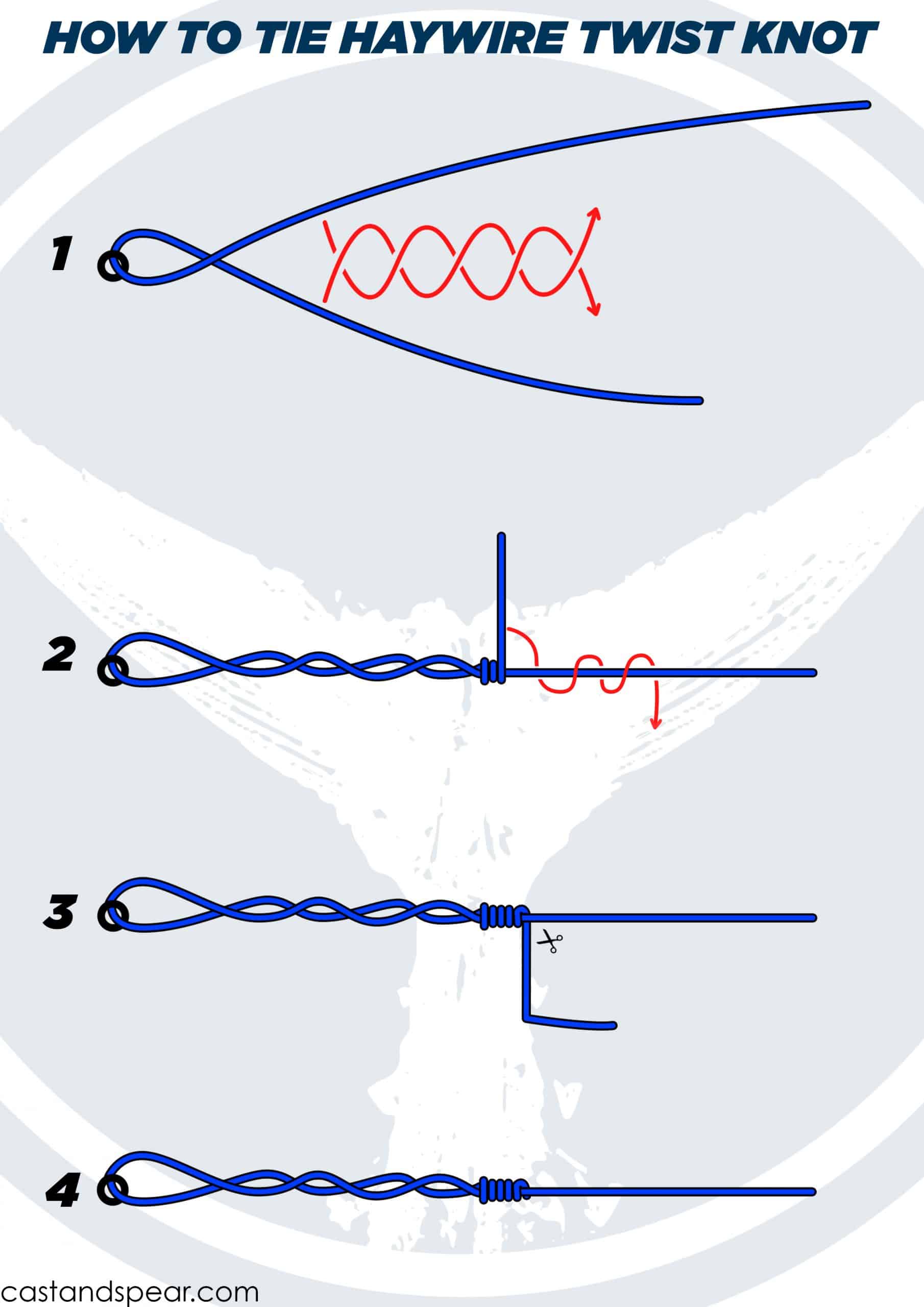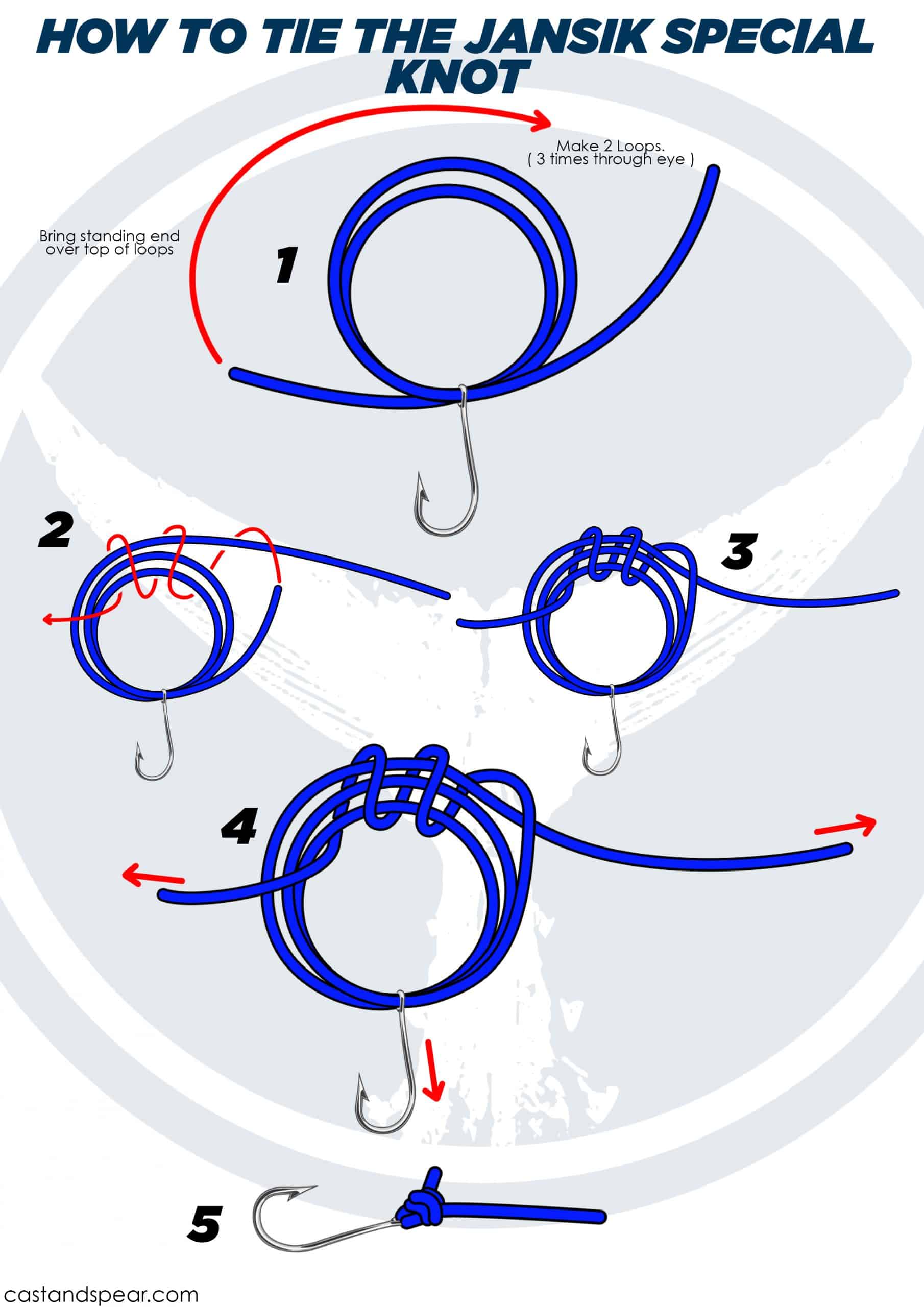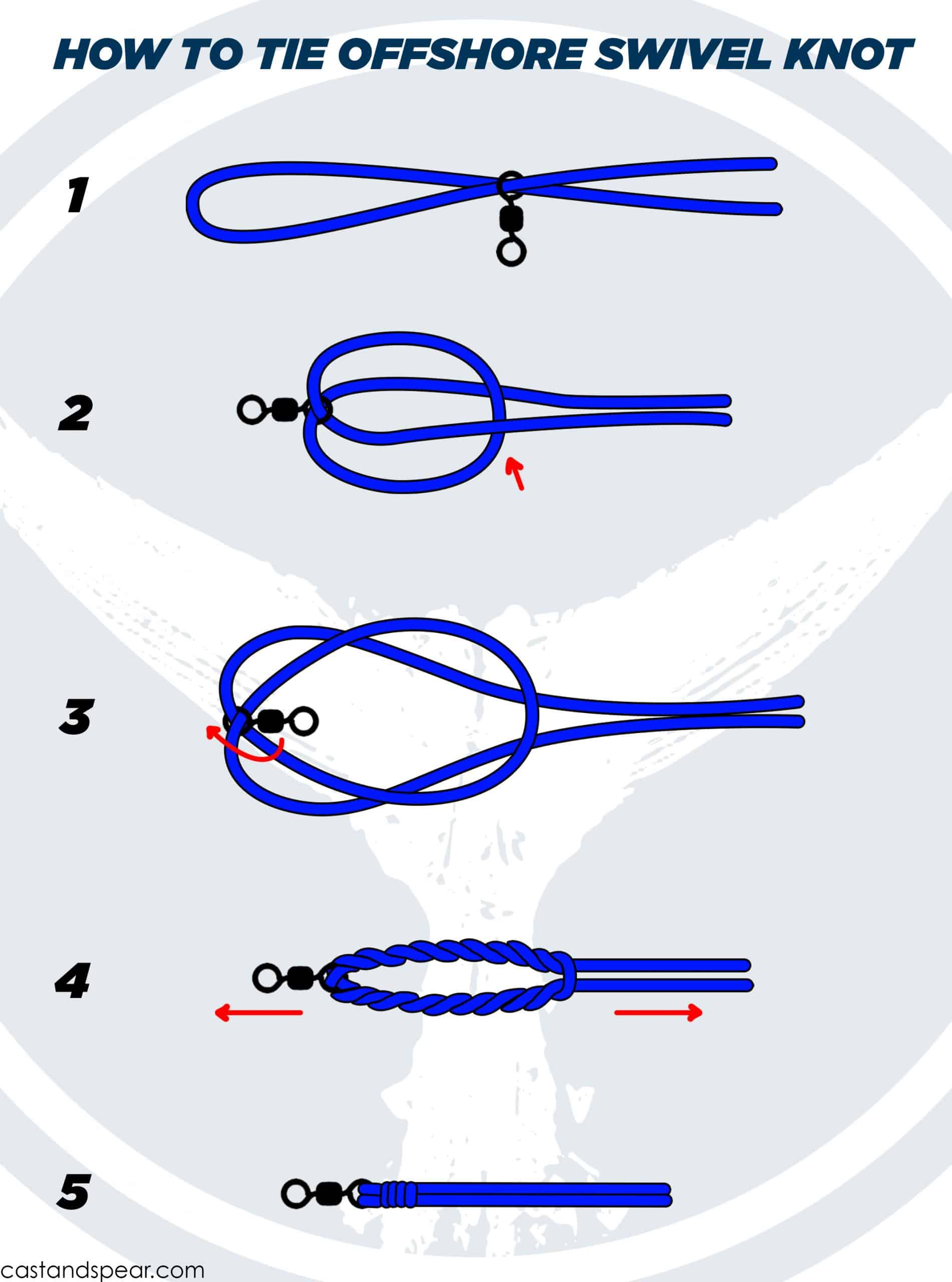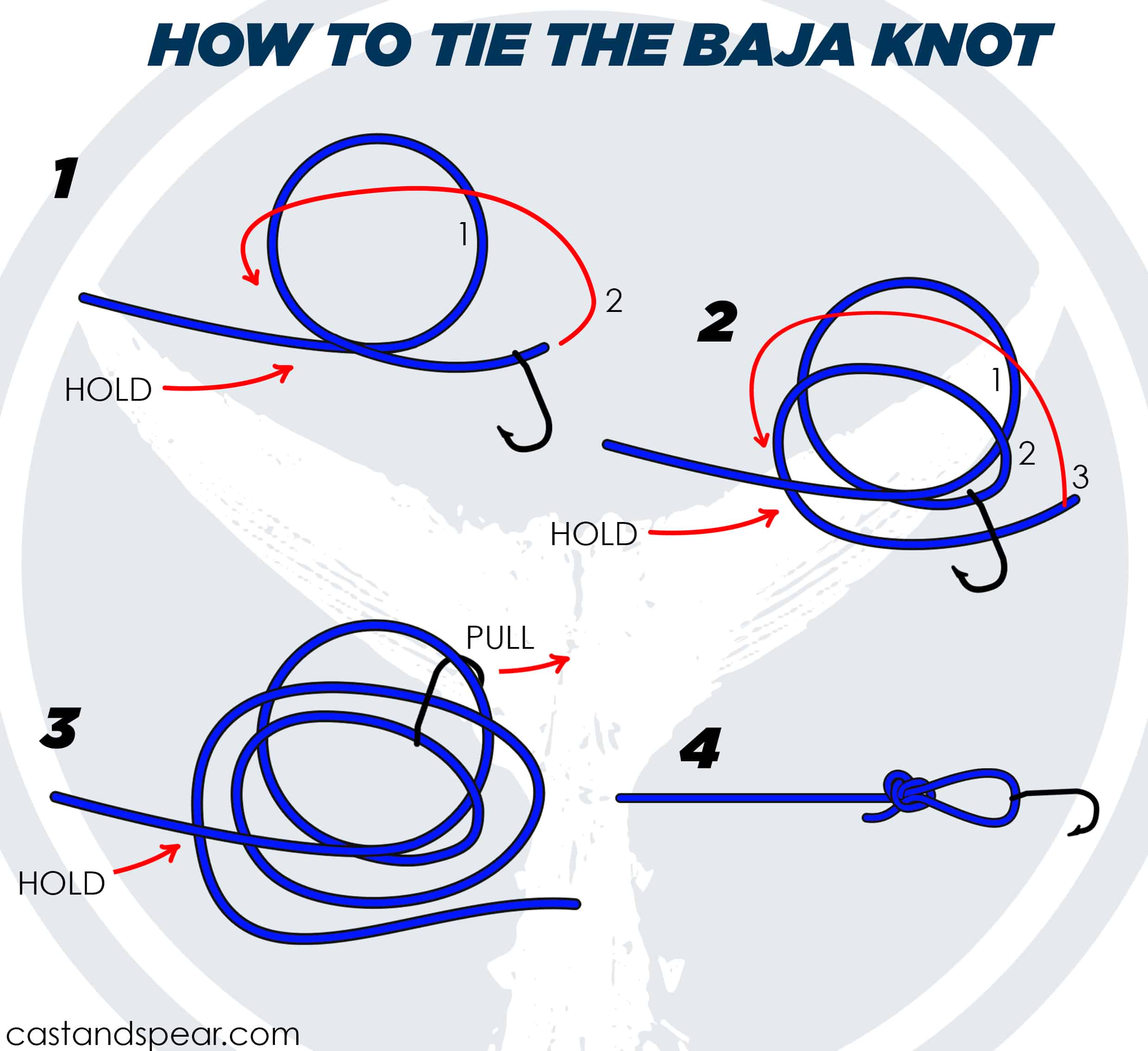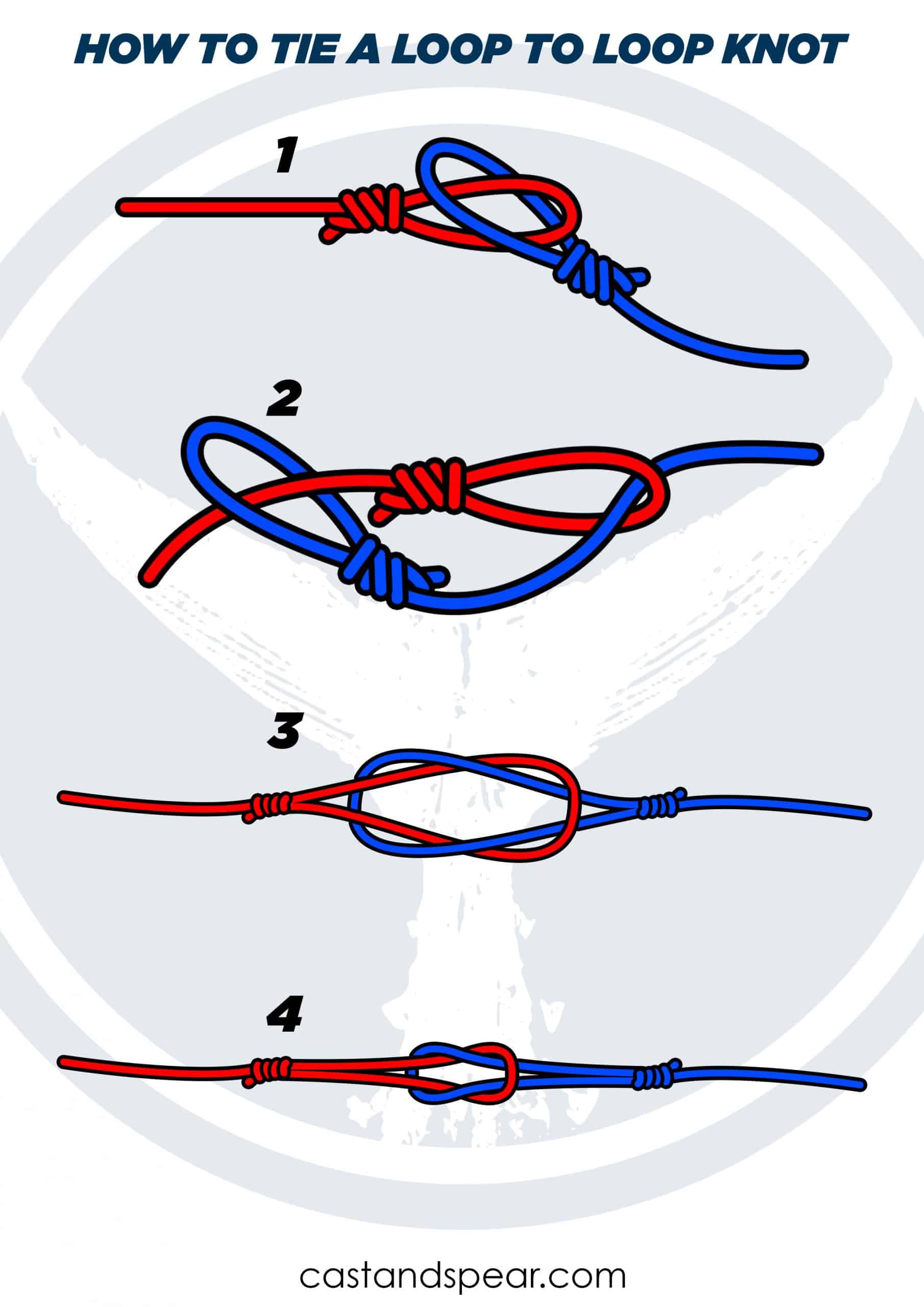Ever found yourself asking, “How do I tie a sliding snell knot?” This knot is a game-changer for any angler, enhancing your fishing experience in ways you might not have imagined. In this guide, we’ll dive deep into the world of the sliding snell knot, offering step-by-step instructions and expert advice.
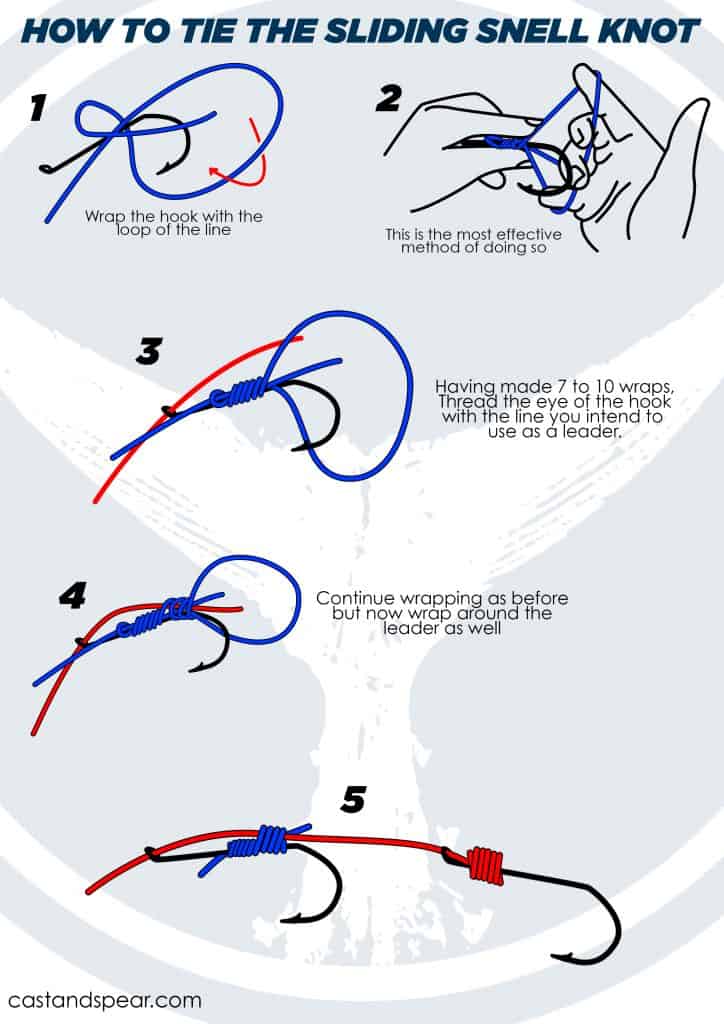
If you know how to tie fishing hooks, constructing the sliding snell knot or rig should be easy. Its unique design allows you to adjust the distance between two hooks, making it a versatile choice for a variety of fishing situations.
The sliding snell knot is a secret weapon for many anglers. Whether you’re aiming for a specific species or adapting to your bait’s size, this knot can be a real difference-maker.
Learn to tie this fishing knot by following these steps.
Tying the Adjustable Snell Knot

Step 1
Start with a single fishing hook and some fishing line that can withstand 10kg of strain, Lay the line beside the book in a loop.
Step 2
Start wrapping the hook with the loop of the line.
Step 3
Make 7 to 10 wraps and then thread the eye of the hook with the fishing line you want to use as the leader.
Step 4
Continue wrapping, but this time wrap the line around the leader as well.
Step 5
Make 5 to 6 wraps around the leader.
Step 6
Close the snell and trim the tags. Then pull more of the leader fishing line through and tie it on the second hook to complete the sliding knot or snell rig.
Tips for Tying a Sliding Snell Knot
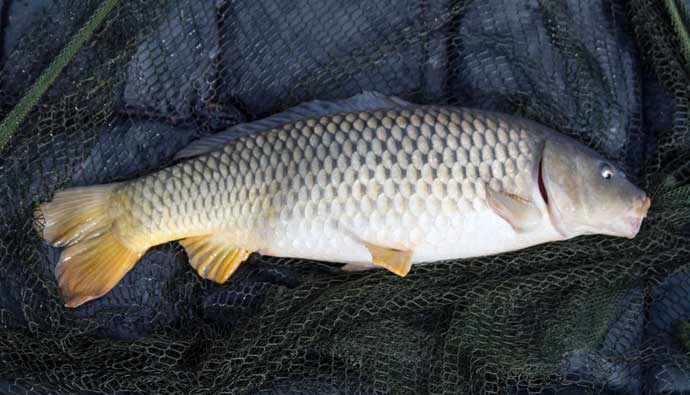
Tying a sliding snell knot can be a bit tricky, especially for beginners. But don’t worry, we’ve got some expert tips to help you master this knot in no time. Here they are:
- Start with the Basics: If you’re new to knot tying, it’s a good idea to start with the basic snell knot before attempting the sliding snell knot. The basic snell knot is simpler and will help you understand the fundamental technique of snelling a hook. Once you’ve mastered the basic snell knot, moving on to the sliding snell knot will be much easier.
- Use a Bead: This is a handy trick to protect your knot. Place a small bead between the hooks. This will prevent the eye of the top hook from ripping into the bottom knot as it slides down when a fish strikes. The bead acts as a buffer, protecting your knot from damage.
- Prevent the Knot from Sliding: To keep your knot in place, tie a separate piece of monofilament line off the eye of the first hook. This will act as a stopper, preventing the knot from sliding and ensuring your hooks stay at the desired distance apart.
- Keep Your Hooks Sharp: This might seem like a no-brainer, but it’s worth mentioning. Make sure both hooks are sharp. A sharp hook increases your chances of a successful hookup. You can use a hook sharpener to maintain the sharpness of your hooks.
When to Use a Sliding Snell Knot
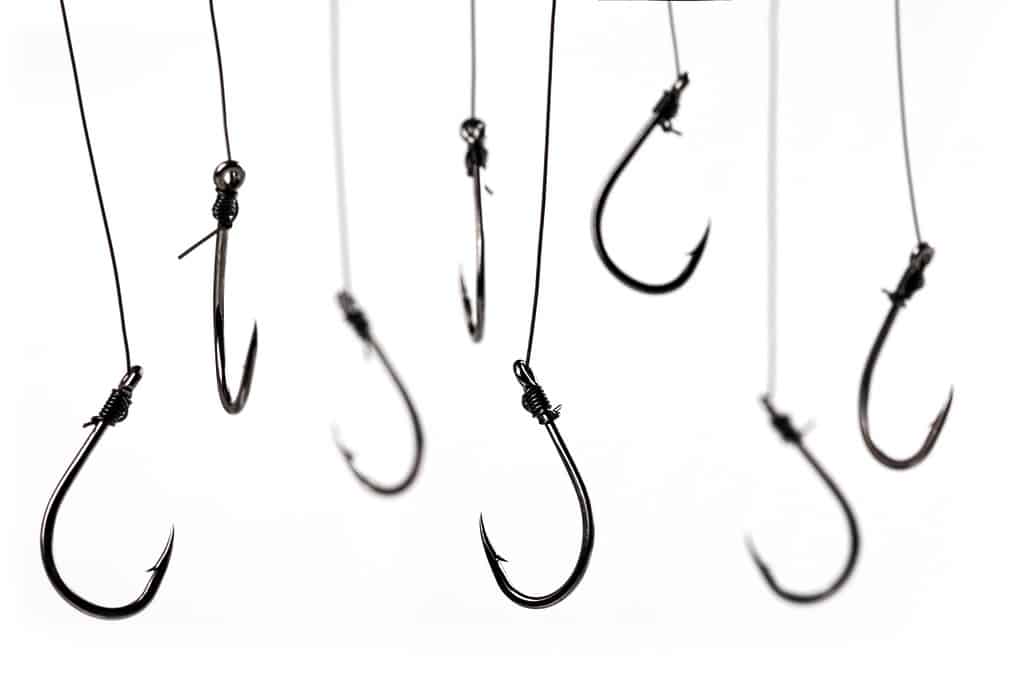
Ever wondered, “When is the perfect time to use a sliding snell knot?” Well, the answer lies in the unique features of this knot. Here’s why:
- Versatility: The sliding snell knot is your go-to knot when you’re fishing with multiple hooks or need to adjust the distance between your hooks based on the size of your bait.
- Targeting Larger Fish: Going after larger fish species like carp or catfish? This knot allows you to use larger baits and position your hooks effectively.
- Picky Fish: If you’re fishing in conditions where the fish are picky or cautious, the adjustability of this knot can make your bait presentation more natural and appealing.
Compared to other knots, the sliding snell knot has a unique edge. While knots like the improved clinch knot or the Palomar knot are known for their simplicity and strength, they lack the adjustability that the sliding snell knot offers. So, if flexibility and adaptability are what you’re after, the sliding snell knot is a fantastic choice.
Advantages and Disadvantages of the Sliding Snell Knot
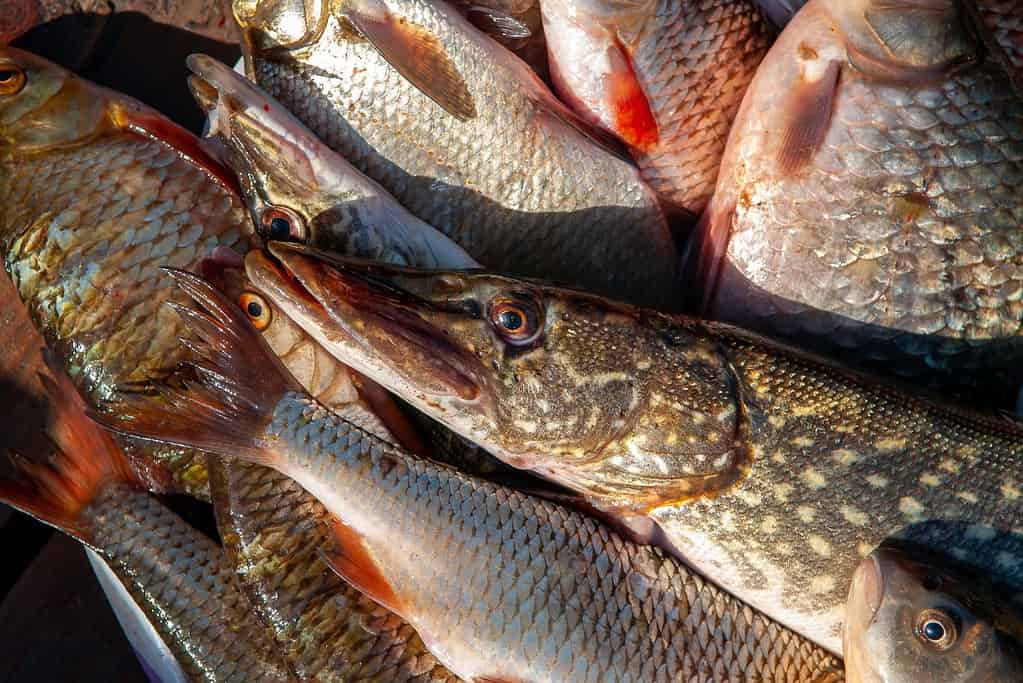
Every knot comes with its own set of strengths and weaknesses, and the sliding snell knot is no exception. Let’s break it down:
Advantages
- Adjustability: This knot is highly adjustable, allowing you to change the distance between your hooks easily. This can be a game-changer when you’re trying to present your bait in the most natural way possible.
- Strength: When tied correctly, the sliding snell knot offers a secure and reliable connection that can withstand the fight of a big fish.
- Improved Hook Sets: The best benefit of these knots is that they increase your chances of getting a catch or multiple fish at the same time.
Disadvantages
- Complexity: For beginners, this knot can be a bit more complex to tie compared to other knots. It’s like tying the common snell but with an extra line.
- Attention to Detail: It requires careful attention to ensure the knot is tied correctly for optimal strength and performance.
Alternatives to the Sliding Snell Knot
While the sliding snell knot is a versatile and effective choice, there are other knots you might want to consider. Here are a couple of alternatives:
Double Snell Knot
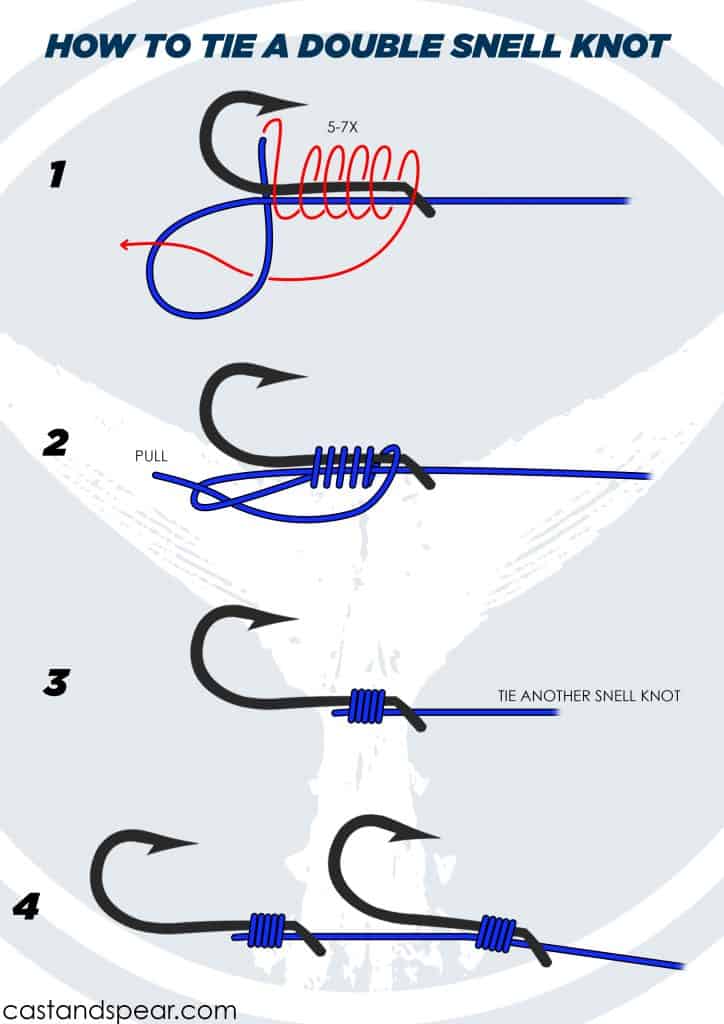
This knot is similar to the sliding snell knot but involves two hooks tied in tandem. It’s a great choice for larger baits, especially when you’re targeting bigger fish species.
Snell Knot
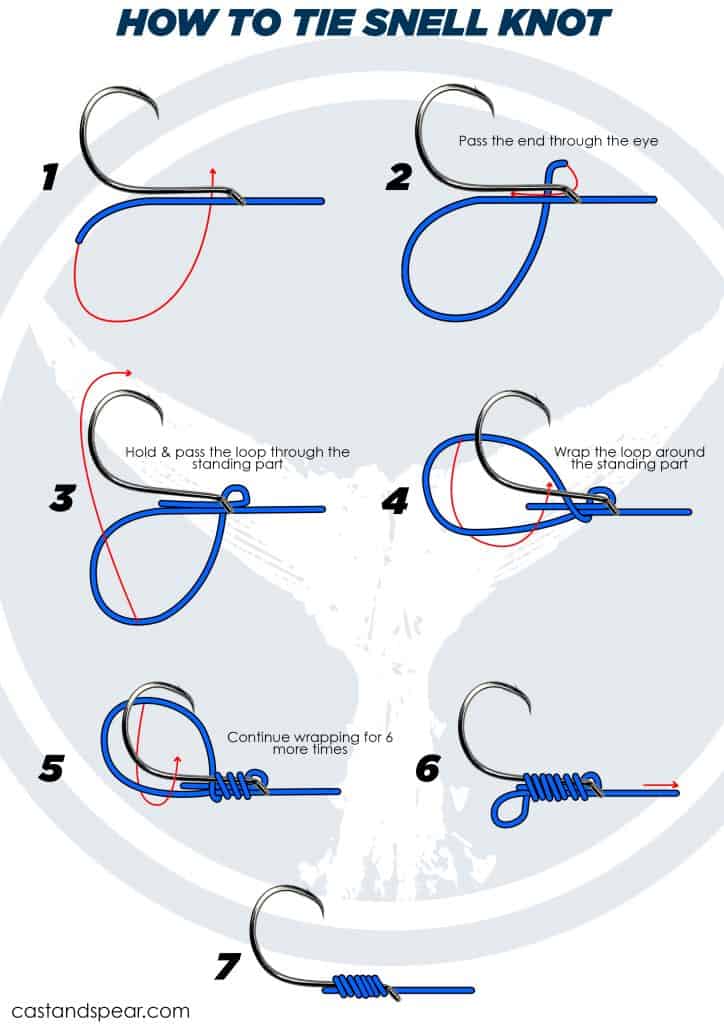
The traditional Snell Knot is another alternative. It’s simpler to tie compared to the sliding snell knot and is known for its strength and reliability. It’s particularly effective when used with bait hooks and provides a strong, straight-line pull, which can improve hook sets.
However, it’s important to note that each knot has its strengths and weaknesses, and the best choice often depends on your specific fishing situation.
For example, while the Double Snell Knot is great for larger baits, it lacks the adjustability of the sliding snell knot. On the other hand, the traditional Snell Knot is simpler to tie but doesn’t offer the same level of flexibility.
Frequently Asked Questions
A simple sliding snell knot diagram should tell you how secure this knot is, but the one you make may not be at first. Practice makes perfect, and a video tutorial may help you tie these knots.
Yes, you can, but if you pair it with mono you can strengthen it further. The size of the hooks may also be a factor.
The hooks that are tied with these knots provide an even and straight-line pull to the fish.
The main advantage of the sliding snell knot is its adjustability. This knot allows you to change the distance between your hooks easily, which can be a game-changer when you’re trying to present your bait in the most natural way possible.
Some tips for tying a successful sliding snell knot include starting with the basic snell knot if you’re a beginner, using a bead to protect your knot, tying a separate piece of monofilament line off the eye of the first hook to prevent the knot from sliding, and ensuring both hooks are sharp.
If your sliding snell knot is slipping, it might be because the knot isn’t tied correctly. Make sure to follow the steps carefully and check the knot before you start fishing. If the problem persists, consider tying a separate piece of monofilament line off the eye of the first hook to act as a stopper.
The sliding snell knot can be used with most types of fishing line, including monofilament, fluorocarbon, and braided lines. However, it’s always a good idea to check the knot’s compatibility with your specific line before using it.
The Verdict
It’s clear that this the sliding snell knot holds a unique place in our tackle box, offering flexibility and adaptability that few other knots can match. But remember, like any fishing skill, mastering the sliding snell knot takes practice.




 Facebook
Facebook YouTube
YouTube